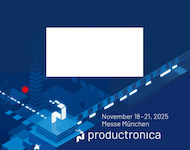
Electronics Production |
The Real Solution to Fake Parts
With increasingly sophisticated criminals, the only way to protect the supply chain is through tools, technology, and new thinking about industrial aftermarkets, Verical-founder John P. Brown states.
The rise of counterfeiting in recent years has been astounding. The US economy loses some $250 billion annually with some three-quarters of a million jobs lost every year to what the Wall Street Journal has labelled as “nothing short of an economic crisis.”
The pain reaches in to all corners of the economy, and the high technology manufacturing is no exception. Counterfeit electronic components can be found in all corners of high tech chain, from basic light switches and games to advanced medical scanners and telecommunications infrastructure.
As electronic components find their way into more and more parts of modern life, the risk of counterfeit will threaten economic growth and consumer safety the world over. For the industry to successfully protect against this risk, we must understand its causes and how finds its way into the legitimate supply chain.
Size and Scope of the Problem
As with any illicit activity, it is notoriously difficult to get firm numbers on just how large the impact of counterfeit electronic components has been. The pain is not just financial‐intellectual property, jobs, manufacturing rework costs, warranties and returns, national security, and the end users’ health and safety are all at risk when counterfeit components infect the supply chain. The UK’s Association of Franchised Distributors of Electronic Components published some startling figures at the cost of letting counterfeits penetrate the manufacturing process. The AFDEC figures put the cost of discovering and replacing a single component in the receiving process near US$0.40 at the time of the study in 2007.
Counterfeiters have become very sophisticated in recent years, and their products penetrate the supply chain more deeply. Less frequently do inspections intercept fakes at the receiving dock. More and more, counterfeit parts pass initial testing make it into the end product. Manufactured without quality in mind, these illicit parts lack the durability of their authentic counterparts and will eventually fail in the field, at much greater cost to the manufacturer than if they had been detected at receiving. These costs would be merely annoying if the incidence of counterfeit components had remained at historical levels.
Counterfeit parts enter the supply chain via the secondary market, and since there is no plausible way to avoid shortages, executives across all sectors of industry must tackle this grave and growing problem head on.
Causes of Counterfeit
Several trends have created this crisis. Some are deep themes of the globalizing economy, others are very specific to the how transactions occur in the electronic components secondary market. None of them are likely to change anytime soon. Apart from a brief mention below, this paper will not examine the macro economic issues involved but will instead concentrate on the more immediate factors which drive illicit parts into the legitimate supply chain.
Over the last 10 years, the growth of manufacturing in China has been staggering. With annual growth rates in excess of 10% (and possibly much more, according to some analysts), the Chinese economy has grown so ferociously in the last decade, it is deeply enmeshed in almost every global supply chain.
This move to becoming the “factory to the world” has included the wholesale relocation of manufacturing from high cost regions to China south-eastern coast. As they have shifted manufacturing know--‐how and methods to China, western manufacturers have learned a painful lesson about the notoriously weak protections for intellectual property in China. Whereas a decade ago the counterfeiters used crude and shoddy techniques to create fakes, today they have access to the most modern tools and techniques and, in some cases, the original assembly lines themselves.
Magnifying the effect of growing markets has been the dramatic penetration of electronic components into entirely new products lines. A child’s toy truck was once just bent metal with some plastic tires, but one now would be hard pressed to find a toy that comes without a dazzling array of flashing lights and sound effects. Automobiles will contain nearly twice the dollar value of electronic components in 2012 than they did a mere 5 years earlier. Newly electronic products mean even more volatility in the electronics supply chain.
Flavors of Fraud
Counterfeit components can take many forms, as criminals exploit the latest weakness in manufacturers’ defences. Quality inspections may adapt and deploy new tests to filter out fake parts, but the counterfeiters will always remain a step ahead. Companies may spend months improving their inspection processes, but counterfeiters can deploy new techniques within weeks, or even days.
Given the substantial financial incentives at stake, counterfeiters will throw resources at hacking a firm’s defences by almost any means necessary, be that by redesigning a fake part’s manufacturing or simply bribing a junior employee for access to the plant.
Fakes may come in many shapes and sizes, but at the simplest level, there are only a few different ways to misrepresent a component’s authenticity: outright knock--‐offs, refurbished parts, mislabelled parts, and scrap. Some corner cases, such as intentionally malicious parts, are unique to products related to national security and are beyond the scope of this paper. Likewise, comprehensive detailed forensic analyses can be found elsewhere.
Defending the Supply Chain
Given all these threats, how can a supply chain manager protect his company and his customers from the risk of counterfeit components? Using most of these approaches, it is impossible, but companies still have to try. Here is a high-level list of some of the different classes of defences: Buffer Stock, Buy from Franchise, Visual Inspection, Component Testing, Trackability/ Traceability, Enhanced Supplier Screening, Policing of the Secondary Market, Government Regulation, Inspections & Police Action and Supply Chain Pedigree.
Conclusion
The threat of counterfeit components has never been greater. Counterfeiting is too profitable and too easy to stop. The high tech supply chain has never been more vulnerable, and the costs of counterfeit have never been so high. Every time legitimate supply chains adopt a new approach to stop fakes, the criminal will adapt and defeat them. Markings, labels, testing – all of these are just temporary defences against highly motivated and well financed criminal syndicates.
In the endless arms race of authentication and counterfeit, the counterfeiters will always win. Visual Inspections may slow counterfeiters temporarily, but the criminals will always adapt and become even more sophisticated. The only defence that counterfeiters cannot defeat is one based on the one thing they cannot replicate: supply chain pedigree. A part’s chain of custody resides in the databases of the legitimate manufacturers and distributors of the world.
-----
Author: John P. Brown is co-founder and VP of Marketing and Strategy at Verical.
This Whitepaper can be downloaded in full here.


